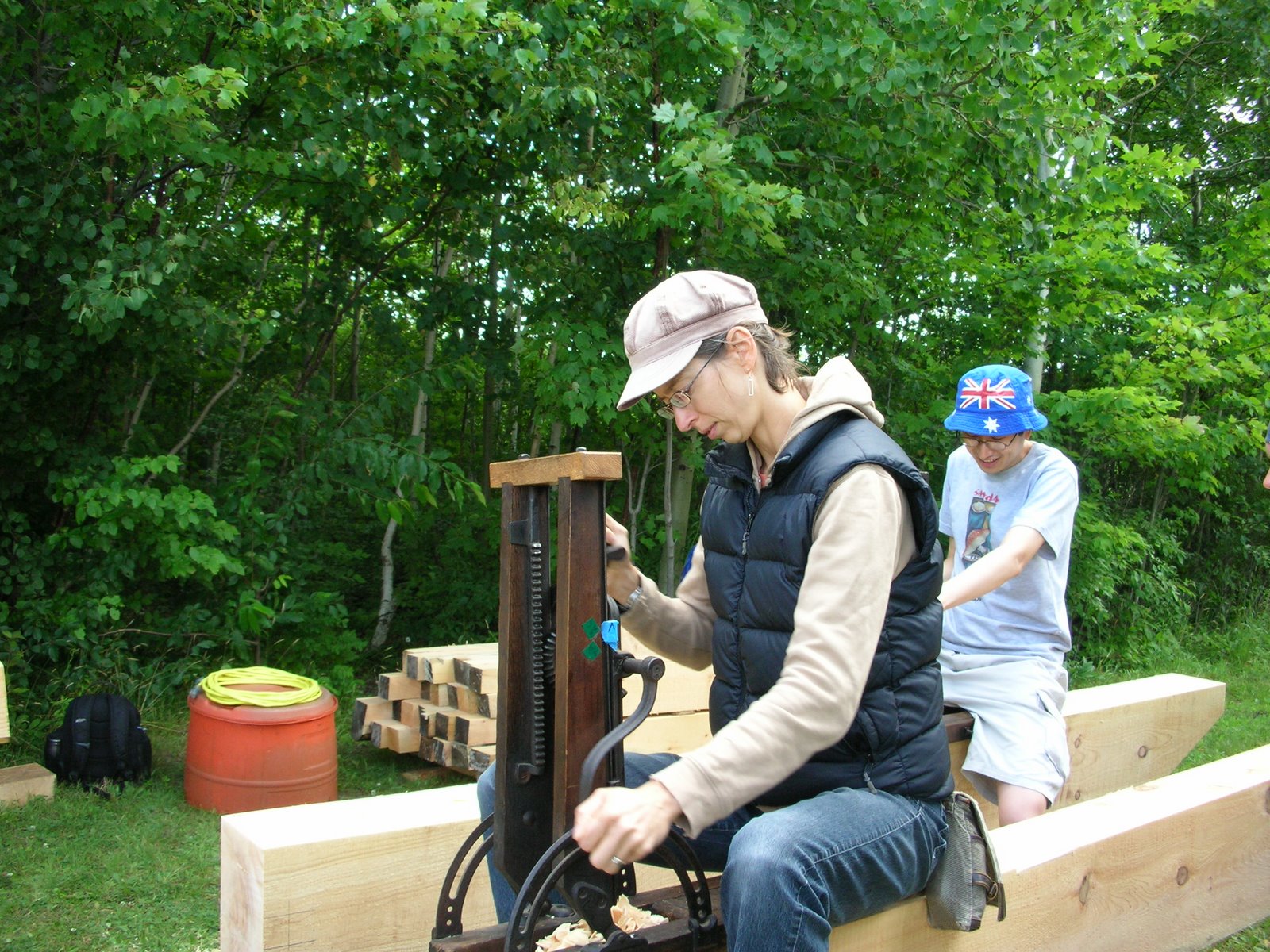Well, it's been a while, hasn't it? You'd almost think that I'd moved away from the natural building world by my lack of activity here lately. However, the good people of the
Ontario Straw Bale Building Coalition (OSBBC), as well as my American friends in
Natural Builders North East (NBNE) continue to allow me to maintain my memberships, anticipating perhaps that, in between raising children, designing magazines and finding places to live, that I might have eventually something of interest to contribute to the field of natural building.
We'll see about that. In the meantime, I was pleased to attend this year's AGM weekend for both groups, held at
Camp Kawartha, north of Peterborough. Here are some what I heard while there.
Building in a cold climate
This joint presentation from
Jacob Deva Racusin (NBNE) and
Henry Wiersma (OSBBC) talked a lot about issues that concern every builder in colder places, namely how to keep water away from your building: warm, moist air from below, rain and snow from above, and everywhere in between. The problem of animals eventually locating, entering and expiring in a foundation drain pipe that drains to daylight was discussed. Minks are apparently quite susceptible to this behavour (maybe it's a northern Vermont thing, I don't know). When minks plug up your foundation drain, you've got a problem. Building in a clean out to deal with this eventual clogging was suggested.
Even better, a member of the audience posited, would be to build in redundancy in the system by putting in a couple, or even five, foundation drainage pipes and send them
all to drain down hill. It's unlikely that five minks would end up clogging all of the drains at the same time. Problem solved, and no cleaning out of dead minks required.
My favourite idea from this talk though, was one I myself have had an abiding interest in. Since most natural homes don't have air conditioners nor electric
clothes dryers, a possible target for energy use reduction could be the
refrigerator. Henry asked, why would we have a machine that, in summer, pumps heat out out of an insulated box, only to dump it into our already-sweltering homes? Conversely, why have an energy hogging compressor run full bore to keep food cold in the winter, when we could harness the exterior temperatures to help, and even sometimes replace the compressor's work? Henry has placed his fridge on an outside wall, venting it outside. In his case, he has an expensive, off-grid
Sun Frost refrigerator, and if I remember correctly, his compressor is located somewhere off in the distance; very wise. He included under-the-fridge, insulated drawers in his installation where he keeps several days' supply of onions, potatoes and carrots. This saves him the daily trek down to the root cellar.
I am going to be campaigning hard for this sort of arrangement in my next abode, though I imagine that I'll have some research to do as to which fridge might be amenable to working under these conditions.
Other tidbits
Retrofit:
Mike Jones and his family gutted a balloon frame century home to do an interior straw bale retrofit, stacking them on edge. He also built a masonry heater using a kit from
Crossfire for the core and hiring out the stone masonry.
Rammed Earth: Tim Krahn from
Natural Building Engineering Group showed images of some absolutely incredible rammed earth homes in Ontario that he's engineered.Maybe if you contact him he'll put some pictures up on his sight. You've got to see them.
Bale barn wrap: Dave Lanfear of
Bale on Bale Construction talked about using the Plop-and-Pop method of straw bale construction, and said now fills any troughs at the top of walls – where the bales have sunk – with as-densely-as-he-can-pack-it, blown-in cellulose, instead of fiddling with straw stuffing.
Miscellaneous: Everybody's using Siga or Proclima tape now, says
Jen Feigin of
Endeavour. I think that's what she said, anyway. ~ Jacob Deva Racusin has a new book out called
The Natural Building Companion that someone could get me for Christmas. ~
Chris Magwood suggested that soon,
composting toilets will be accommodated in the Ontario building code, which is no doubt partially attributable to Endeavour's fine work on
Canada's Greenest Home. Some of you may know of
my own struggles trying to get a composting toilet approved for a downtown Toronto park, so this is welcome news to me. ~ Downtown Toronto can now name one straw bale house addition, thanks to Melissa Zytaruk and the
Fourth Pig Worker Coop.
My sincere appreciation goes out to the Peterborough crew who organized this inspiring event and gave us a venue to share information, compare notes, cheer our successes and get help with challenges. I was reminded that it's not just the sustainable techniques that brought me this direction; it's mostly the people.





